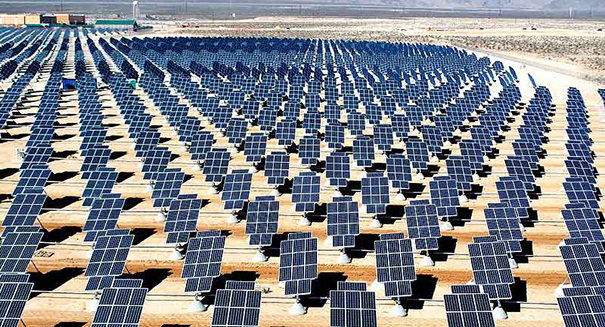
Although pervoskite-based solar cells aren't quite as efficient yet as their silicon counterparts, they are rapidly closing the gap, and at a fraction of the cost.
Researchers at the University of Utah and University of Texas have uncovered some of the secrets behind perovskite solar cells, which have the capability to produce cheap and super-efficient solar power.
Hybrid perovskite solar cells have been in development for years, but have only recently attained the power conversion efficiencies that would allow it to produce significant electricity from sunlight using conventional materials, according to a Phys.org report.
The findings, which were published in the journal Nature Physics, help fill some of the gaps remaining in such technology, as scientists hadn’t quite gotten a grasp at what was happening at the molecular level.
The new study provides a way to quickly test prototypes of hybrid perovskite materials using magnetic fields. By using a magnetic field, scientists are able to obtain answers about how electrons and “holes” in semiconductor compounds act.
Photovoltaic solar cells, for example, suck in photons of sunlight, which generates an exciton — the name for when an electron is paired with an electron hole, a short event that creates electrical current.
Electrons and their holes have something called “spin,” and a magnetic field can change the direction of that spin, something that can’t be observed directly but can be inferred from changes to the electrical conductivity of a material, according to the report.
The research answers the question of whether hybrid perovskite devices act like silicon solar cells or more like excitonic solar cells, and the magnetic field test has revealed it’s not excitonic and looks more like organic photovoltaic materials.
Pervoskite devices are pushing 20 percent of sunlight conversion efficiency — out of a theoretical maximum of 33 percent — which isn’t quite as good as the 26 percent of silicon cells, but it is closing the gap, and such cells would cost a fraction of that of silicon cells.
If scientists can further improve the efficiency of these cells, it could be a game-changer in solar energy — and energy period.
Leave a Reply